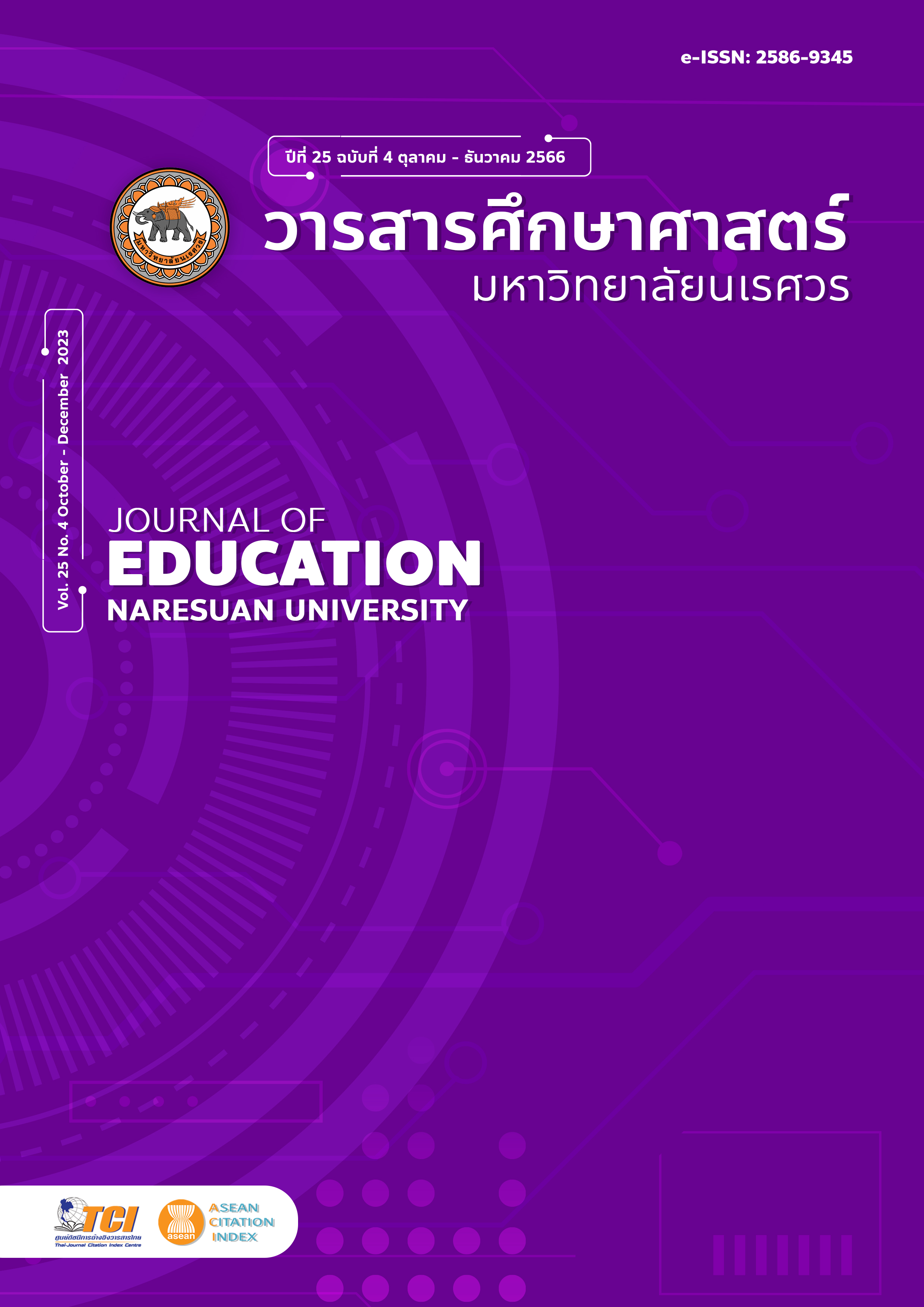UTILIZING DE BONO'S THINKING SYSTEMS BASED LEARNING APPROACH TO ENHANCE MEDIA LITERACY SKILLS FOR 11TH GRADE STUDENTS ABOUT EFFECTING FACTORS OF CHEMICAL REACTION RATE EXPERIMENT
Main Article Content
Abstract
The objective of this research is to investigate learning system based on De Bono’s thinking tools. The learning approach is to promote the students’ ability to critically identify, access, create and even manipulate various types of media related to the topic of effecting factors of chemical reaction for 11th grade students. The experiment was conducted by using action research process with three cycle systems. The research participants were 30 11th grade students. The tools used in the study were learning plan methods, learning reflection, activity recording, project based learning. Learning assessment in media literacy skills were conducted by using qualitative content analysis. Data credibility was examined by method triangulation. The studies found that the proper ways of learning management systems were consisted of five steps: 1) there should be situations about obscure science articles in trend of social interest, 2) the activities should be in form of group process through analysis and discussion, and 3) there should be assessment criteria for credible sources of information for students. They can continuously improve their literacy skills, including accessing, engaging with, analyzing, evaluating, and creating media respectively.
Article Details

This work is licensed under a Creative Commons Attribution-NonCommercial-NoDerivatives 4.0 International License.
The owner of the article does not copy or violate any of its copyright. If any copyright infringement occurs or prosecution, in any case, the Editorial Board is not involved in all the rights to the owner of the article to be performed.
References
Apiwantanagon, T. (2009) Media Literacy through critical thinking and reading. Retrieved March 20, 2019, from https://www.wattana.ac.th/wwa/news/1-2%20PL_to_ML.pdf [in Thai]
Kainunna, P. (2016). Media literacy is a citizen’s duty. Songkhla: Ace print (2004). [in Thai]
Kemmis, S., & Mctaggart, R. (1998). The action research planner. Geelong, Victoria: Deakin University Press.
Krutasen, U. (2013). The development of the media literacy learning’s process approach for the youth leader. Veridian E-Journal, Silpakorn University (Humanities, Social Sciences and Arts), 6(3), 276-285. [in Thai]
National Association for Media Literacy Education. (2014). Media literacy defined. Retrieved December 10, 2020, from https://namle.net/resources/media-literacy-defined/
Office of the National Education Commission. (1997). Learning theory for critical thinking development the theory and in practice of learning prototype. Bangkok: Office of the National Education Commission. [in Thai]
Prachanban, P, & Kornpuang, A. (2016). The research and development of the measurement instruments of the media literacy skills in the 21st century for secondary students. Journal of Education Naresuan University, 18(1), 144-154. [in Thai]
Reunwai, N. (2009). Broadcast media CRT monitoring child’s activities. Retrieved April 4, 2020, from http://cclickthailand.com/wp-content/uploads/2020/04/12.pdf [in Thai]
Tansuwannond, C. (2017). Critical thinking, understanding and collaboration, creative thinking, media literacy and conducting ethical rules: Key traits and skills for Thai youth in the 21st century. Retrieved April 20, 2020, fromhttps://e-journal.sru.ac.th/index.php/srj/article/view/724 [in Thai]
Tansuwannond, C. (2017). Media Literacy (2nd ed.). Bangkok: Graphic Site. [in Thai]
Thoman, E. (1999). Founding inspiration media value. Retrieved April 16, 2021, from
http://www.medialit.org/founding-inspiration
UNESCO. (2010). Media and information literacy. Retrieved April 16, 2019, from http://www.unesco.org/webworld/en/information-literacy


